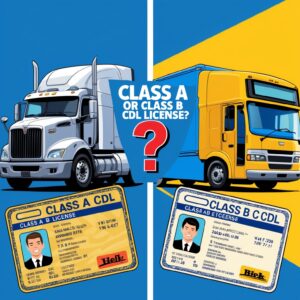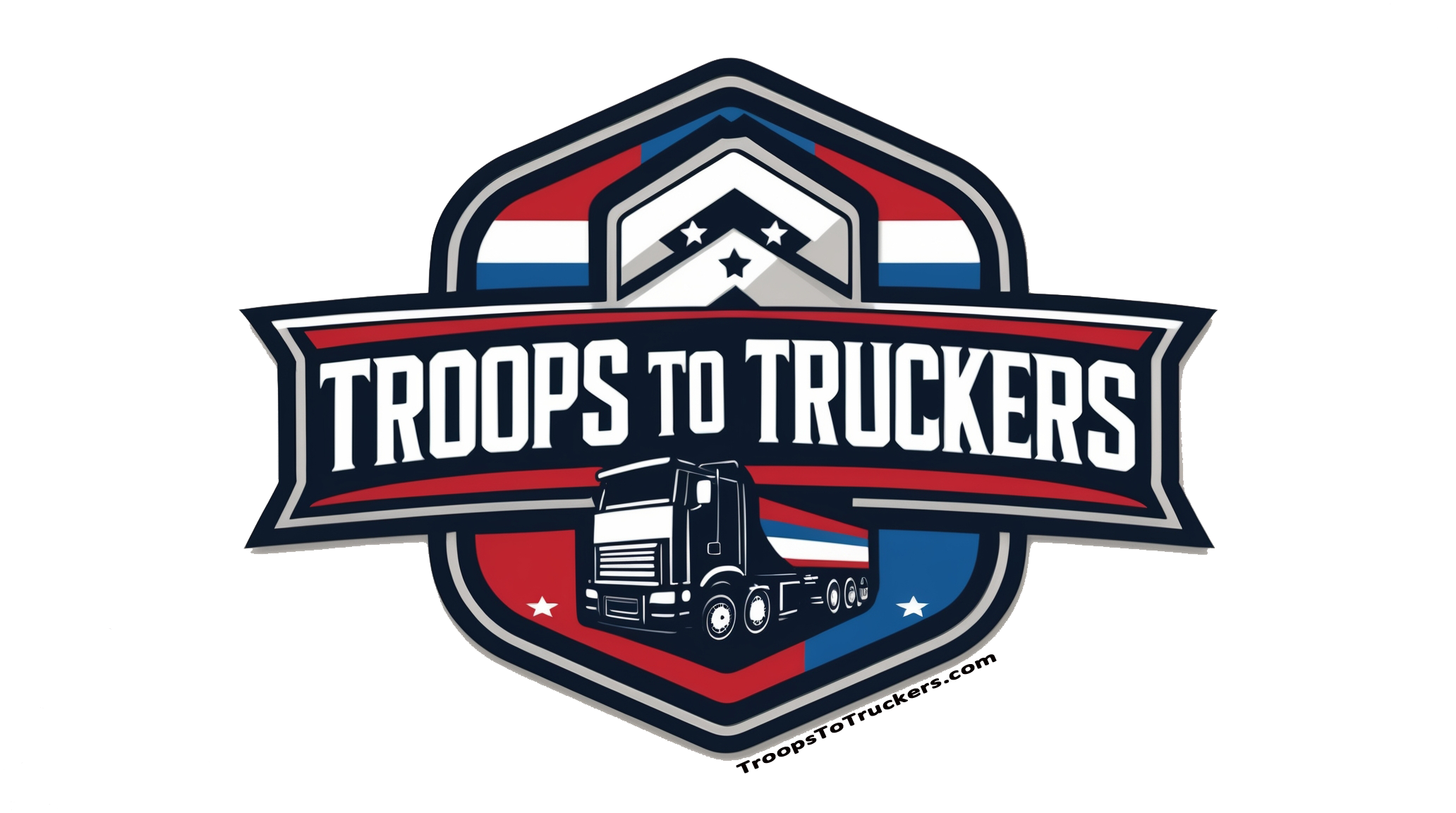 When it comes to starting a career in commercial driving, one of the most important decisions an aspiring driver will make is choosing between a Class A and Class B Commercial Driver’s License (CDL).
When it comes to starting a career in commercial driving, one of the most important decisions an aspiring driver will make is choosing between a Class A and Class B Commercial Driver’s License (CDL).
While both licenses open doors to a wide range of employment opportunities, they have distinct differences in terms of the vehicles they qualify drivers to operate, the types of jobs available, and the career paths they enable. Understanding these distinctions can help new drivers align their career goals with the appropriate license and set them on a path to success in the trucking industry.
What Is a Class A CDL?
A Class A CDL is a license that permits drivers to operate a combination of vehicles with a total weight of 26,001 pounds or more, provided the towed vehicle weighs more than 10,000 pounds. This license qualifies drivers to operate larger and more complex vehicles, making it the most versatile type of CDL. With a Class A CDL, a driver is legally permitted to operate the following types of vehicles:
Tractor-Trailers (also known as semis or 18-wheelers): These are the standard heavy-duty trucks used for transporting goods over long distances.
Tanker Trucks: Used to haul liquids like fuel or chemicals, requiring specialized training.
Flatbeds: Trucks that carry large, heavy loads on open platforms. These are commonly used for transporting equipment, lumber, and large machinery.
Livestock Carriers: Used for transporting animals, these trucks often require additional handling skills due to the nature of the cargo.
Double/Triple Trailers: Some trucking companies use multiple trailers attached in tandem, which requires additional skill and training to operate safely.
The Class A CDL is particularly suited for drivers who are interested in long-haul trucking jobs, which typically involve driving across state lines and often include weeks or even months on the road.
Because of the added complexity and responsibility associated with driving these larger vehicles, Class A CDL holders often have higher earning potential than their Class B counterparts.
What Is a Class B CDL?
A Class B CDL, on the other hand, allows drivers to operate a single vehicle with a gross vehicle weight rating (GVWR) of 26,001 pounds or more, as long as the vehicle being towed does not exceed 10,000 pounds. While this license doesn’t offer the same level of flexibility as a Class A CDL, it still qualifies drivers to operate a variety of medium- to large-sized vehicles, including:
Box Trucks: These are enclosed, medium-sized trucks often used for local deliveries of items like furniture, appliances, and packages.
Straight Trucks: Vehicles where the cab and cargo area are fixed together, commonly used for shorter hauls and local deliveries.
Dump Trucks: Primarily used in construction, dump trucks transport materials like dirt, gravel, and sand.
Cement Mixers: Often seen at construction sites, these trucks carry and mix concrete on the go.
Buses: With additional endorsements, a Class B CDL can also qualify a driver to operate passenger buses, including school buses and city transit buses.
Because Class B CDL jobs typically involve smaller vehicles and more local routes, they are ideal for individuals who prefer to stay closer to home. These jobs may offer more regular hours, allowing drivers to have a better work-life balance compared to long-haul trucking.
Key Differences Between Class A and Class B CDLs
While both licenses enable drivers to work in the trucking and transportation industry, there are several key differences between Class A and Class B CDLs:
Vehicle Size and Complexity:
Class A CDL holders can operate larger, more complex vehicles, including combinations of multiple trailers, while Class B CDL holders are limited to single vehicles or smaller towing capacities.
Range of Employment Opportunities:
Class A licenses offer more job opportunities, especially in long-haul and interstate trucking, whereas Class B licenses are often associated with local delivery and construction jobs.
Earning Potential:
Due to the demands and skill required for operating larger vehicles, Class A CDL holders generally have higher earning potential than Class B CDL holders.
Time on the Road:
Class A CDL holders are more likely to engage in long-haul routes, which can keep them away from home for extended periods. Class B drivers typically have jobs that allow them to return home daily or weekly.
Endorsements:
Both types of licenses can have endorsements (like Tanker, Hazmat, or Passenger endorsements), but Class A CDL holders often pursue endorsements that enhance their versatility, making them eligible for specialized jobs.
Which CDL Is Right for Your Career Goals?
Choosing between a Class A and Class B CDL ultimately depends on your career goals, lifestyle preferences, and desired income level. Here are some factors to consider when deciding which license is best for you:
Career Aspirations
If your goal is to maximize earning potential and you’re open to spending long periods on the road, a Class A CDL is a solid choice. This license offers a broader range of high-paying opportunities, particularly in long-haul trucking.
On the other hand, if you’re more interested in stable, local work and don’t want to be away from home, a Class B CDL might be a better fit. Class B jobs offer stability, regular hours, and more time at home, which can be appealing for those with families or other commitments.
Lifestyle Preferences
Long-haul trucking can be a demanding lifestyle, with drivers often spending weeks or months on the road. While the income can be rewarding, it requires a significant commitment to a life on the move.
For those who prefer a predictable schedule and the ability to return home each night, Class B positions, such as local delivery or bus driving, may be ideal. These roles offer a consistent routine, making it easier to balance work with family or personal time.
Skill and Endurance
Class A CDL jobs often require a higher level of physical and mental endurance due to the long hours and the need to operate large, complex vehicles safely over extended distances. If you enjoy a challenge and thrive on independence, a Class A license will allow you to stretch those skills.
Class B CDL jobs can be less demanding in terms of time on the road but may require more physical exertion depending on the role (e.g., delivery drivers may need to load and unload cargo frequently). If you’re looking for variety without the cross-country travel, Class B can provide a satisfying balance.
Career Advancement Opportunities
With a Class A CDL, drivers can build experience and move into specialized roles, such as hauling hazardous materials, driving double trailers, or transporting oversized loads. This versatility can create opportunities for career advancement and increased earnings.
Class B drivers may find growth opportunities in areas like passenger transportation or construction. For example, a driver may start as a box truck driver and eventually move into operating larger equipment, like cement mixers or dump trucks.
Making an Informed Choice
Both Class A and Class B CDLs offer rewarding career paths, but the right choice will depend on your unique needs and goals. Aspiring drivers should consider factors like desired income, preferred lifestyle, and career advancement aspirations when deciding between the two.
For some, the freedom and financial rewards of a Class A CDL will make it the best choice. For others, the stability and work-life balance associated with a Class B CDL will be more appealing.
Whether you choose to pursue a Class A or Class B CDL, both licenses provide opportunities to build a successful and fulfilling career in the commercial driving industry. As you consider your options, remember that your choice doesn’t have to be final—many drivers start with a Class B CDL to gain experience and later upgrade to a Class A CDL as their goals and opportunities evolve.
In either case, pursuing a CDL is a significant step toward a stable and rewarding future on the road.
Visit our website or connect with a career counselor to discuss which CDL path is right for you. Our team at MRC is here to support you as you begin your journey in the trucking industry, providing resources, guidance, and job placement assistance tailored to your needs and aspirations.




Comments are closed